Overnight, the hottest narrative in the crypto space has transformed into "Internet Capital Markets," with a number of crypto projects and founders, led by the new Solana ecosystem Launchpad platform Believe, releasing this phrase. Together with "Believe in something," it has become a new slogan to kick off the on-chain bull market.
So what exactly is the so-called "Internet Capital Markets"? Will it become just another fleeting hype like the Content Coin of the Base ecosystem? What related assets are available for selection?
Post-VC Coin Era Financing Methods
In a financing PPT from a few years ago, Solana mentioned its goal to create a "Nasdaq on-chain," or a blockchain operating at Nasdaq's speed. Looking at the current crypto ecosystem, Solana has indeed achieved this in terms of speed. However, as "asset issuance" gradually becomes the largest meta-narrative in the crypto space, Solana's role as merely a Nasdaq providing trading functions has become less appealing.
After experiencing a series of product updates like Pumpfun, Timefun, and Clount, Solana's high throughput and low latency make it suitable for building a global decentralized capital market, rather than just mimicking Nasdaq's trading model. The market currently needs an open, permissionless financing and trading ecosystem that covers a variety of assets from meme coins to NFTs to startup projects, which aligns more closely with Solana's technical advantages.
Lily Liu, chair of the Solana Foundation, is an evangelist for Solana's commitment to building "Internet Capital Markets." She has explained in various online and offline settings that Internet Capital Markets refer to creating global financial infrastructure through blockchain technology, allowing 5.5 billion internet users to participate in capital market asset trading. This vision defines ICM as a decentralized financing method that breaks down traditional financial barriers (such as complex paperwork and high thresholds).
By the end of December 2024, Akshay BD, head of the Solana ecosystem Superteam, mentioned the concepts of "Internet Capital Markets" and "F.A.T. Protocol Engineering" in the Solana 2025 marketing memo. He believes that in 2024, companies will be able to go public "on the internet" and reach over a billion investors holding private keys—who will vote for their desired future with their funds, not limited to stocks but covering all asset classes, cultures, and ideologies worth owning.
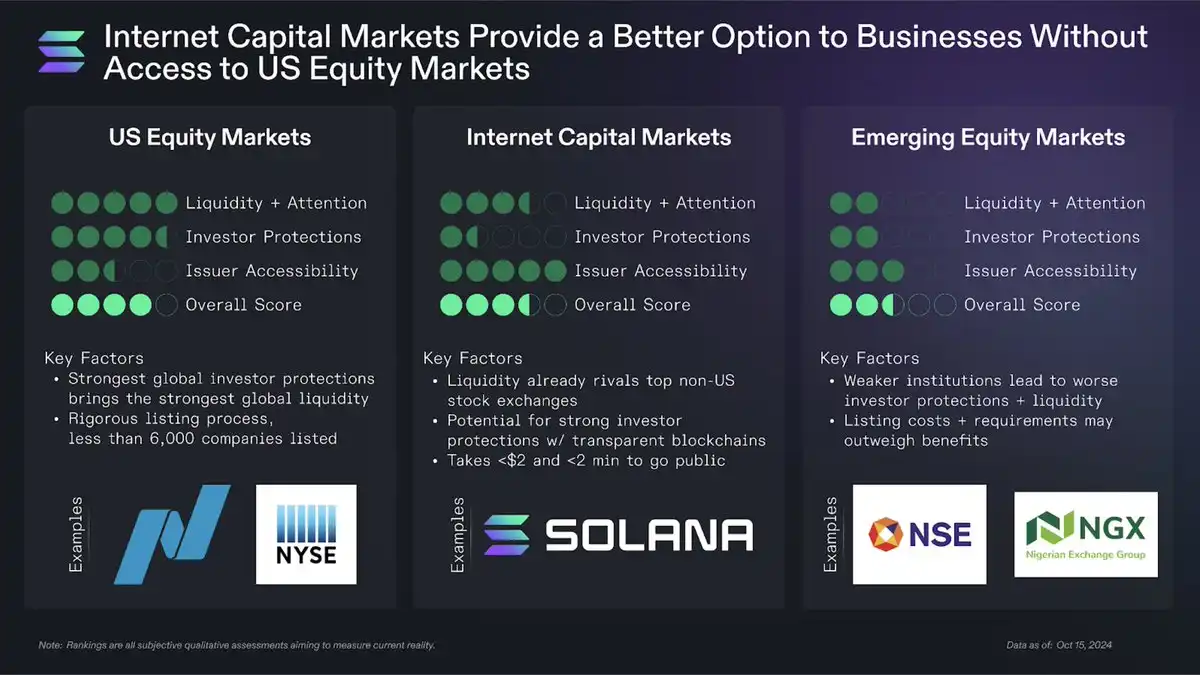
The recently heated AI token issuance platform Virtuals is also doing the same thing. Its newly launched point-based mechanism, Genesis, allows users to accumulate points by purchasing Virtuals ecosystem tokens, staking VIRTUAL, VADER, and other channels, gaining access to participate in new project issuances. This is a choice for new projects to issue tokens and successfully cold start.
However, the Virtuals ecosystem mainly focuses on the Crypto+AI track, while the platform currently receiving the most attention is called Believe, which was formerly a social influence assetization platform Clout. The slogan of the Believe platform is similar to "Believe in Something," where users can reply with @launch followed by the token name under any tweet to turn it into a token.
Since its launch on April 27, Believe has demonstrated strong market explosive power. It has not only attracted the attention of mainstream projects and founders in the Solana ecosystem but has also generated considerable revenue. According to Believescreener data, the estimated revenue of the Believe platform in the past 24 hours reached $7.62 million, with creator earnings amounting to $3.81 million.
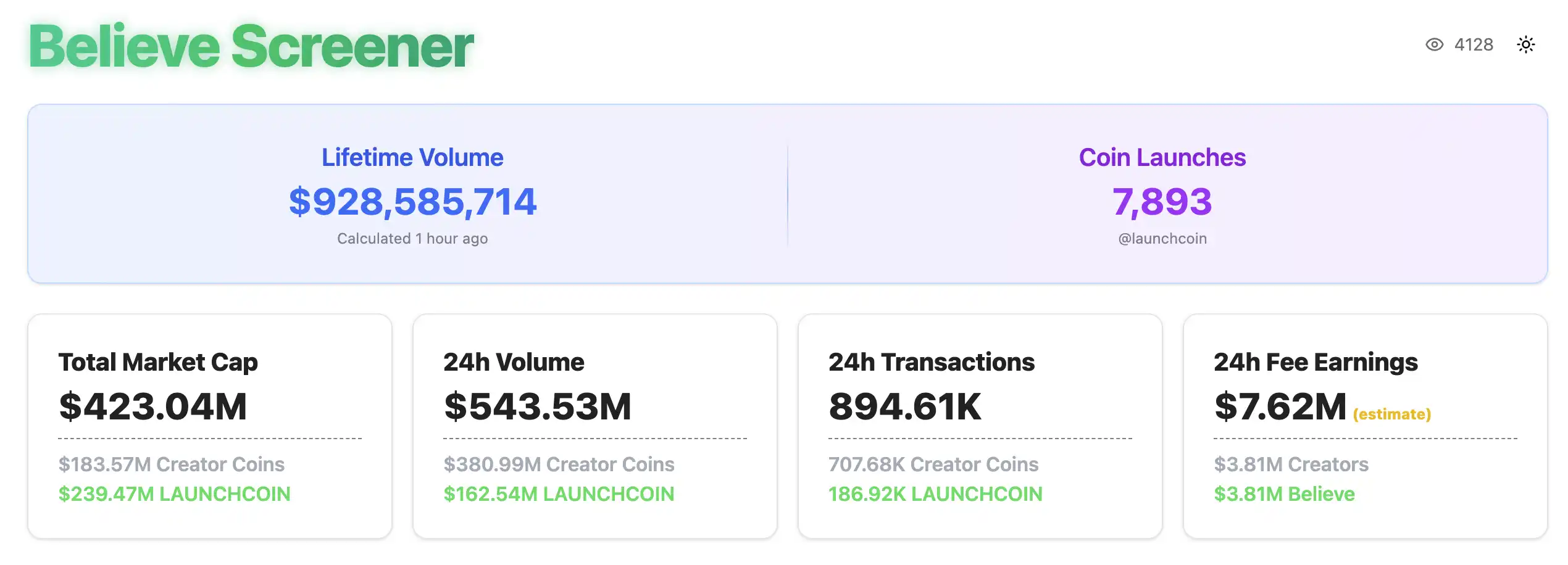
With the explosive rise of Believe's platform token LaunchCoin, other tokens launched by the Believe platform have also gained market attention. These tokens are categorized under the previously mentioned "Internet Capital Markets" concept, as they have created actual products compared to the tokens on Pump.Fun, which only had an image.
ICM Related Concept Tokens
Currently, the leading concept in ICM is the Believe platform token LAUNCHCOIN. In fact, Believe has no technical differences from previous token launch platforms. If you have an idea, you just need to @launchcoin on X and write the token name to create a token. If others believe in your idea, they will buy your token. As the creator, you can withdraw fees to put your idea into practice.
LAUNCHCOIN currently has a market cap of $235 million, with a 24-hour increase of 220%.
Related Reading: "LaunchCoin 200x in a Day, How Did Believe Create a $200 Million Golden Dog After Zeroing Out? | 100x Review"
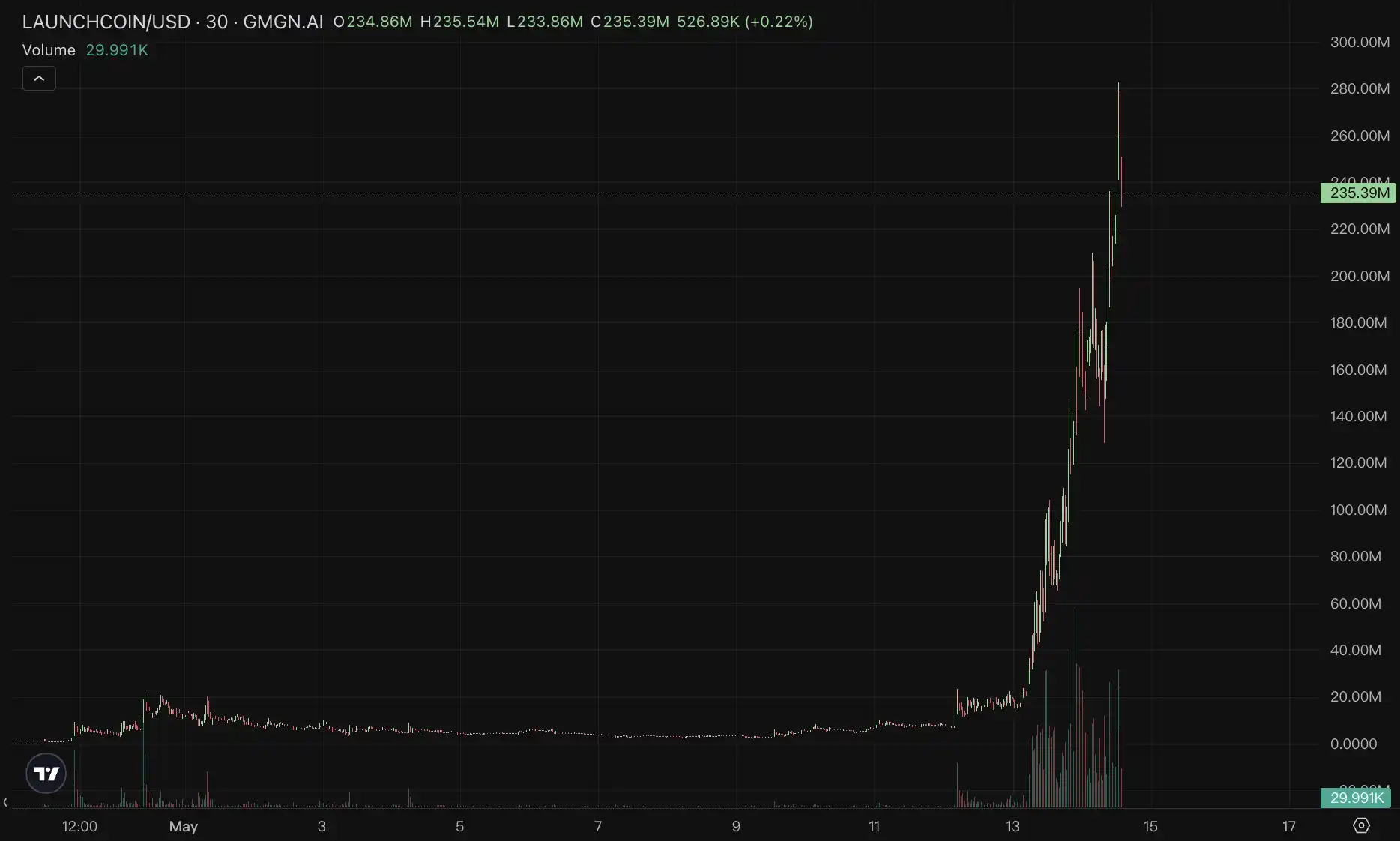
BSCREENER
BSCREENER is the platform token of BelieveScreener, which is a dashboard platform for Believe initiated by @nanowisp. He stated that token trading fees will be used to cover website and hosting costs. There are no token utilities, no reward mechanisms, and no roadmap—just a simple token to help keep the project running.
Currently, BSCREENER has a market cap of $13.6 million, with a 24-hour increase of 2500%. As the token was launched not long ago, its subsequent performance remains to be observed.
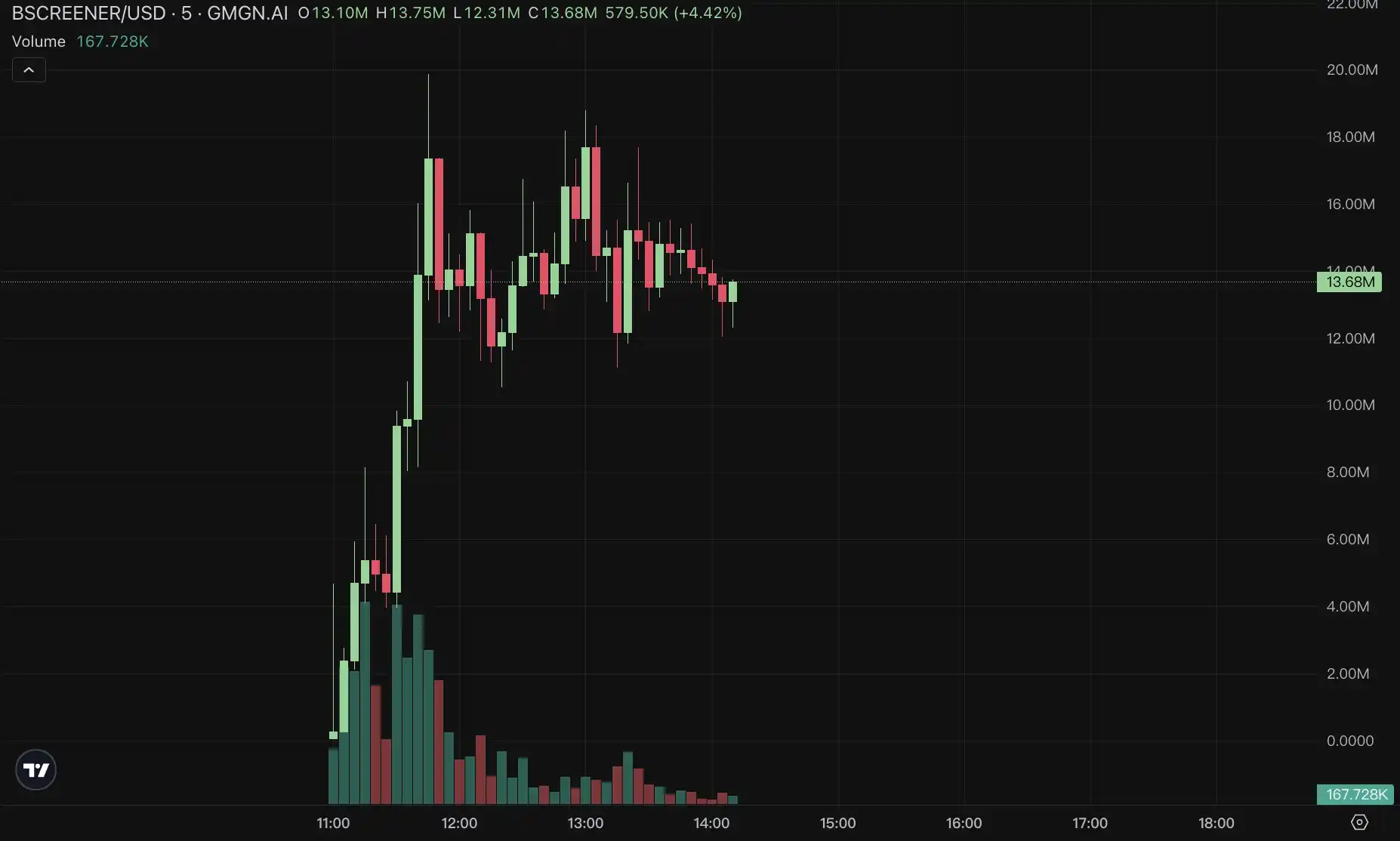
DUPE
DUPE (Deal Unlocking Price Engine) is a tool for "finding alternatives," proposed by @nikitabier and @ghoshal. By simply adding "dupe dot com" before any product page link, the system will automatically help you find cheaper similar products.
Currently, DUPE has a market cap of over $50 million, with a 24-hour increase of 30%.
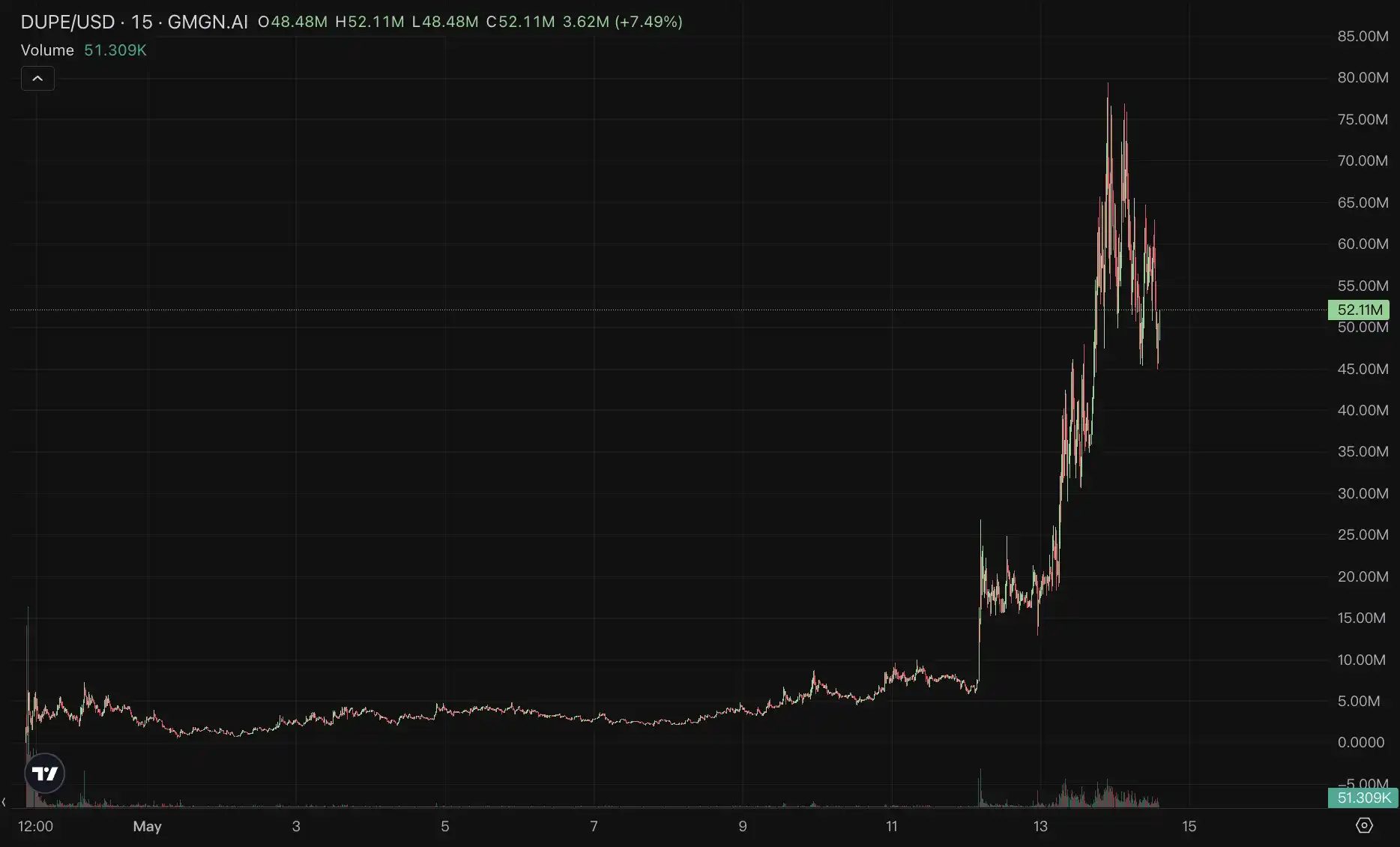
AURA
AURA is the platform token of Aurascope, a camera-first mobile application that allows users to scan real-world objects, places, and people to understand how they affect their energy, track their daily scores, increase their collections, and compete with friends to stay in sync with their surroundings. It rewards contributors who post on the platform. Its founder is former VC and Rising Star partner @sabakarimm.
AURA currently has a market cap of $9 million, with a 24-hour increase of 800%.
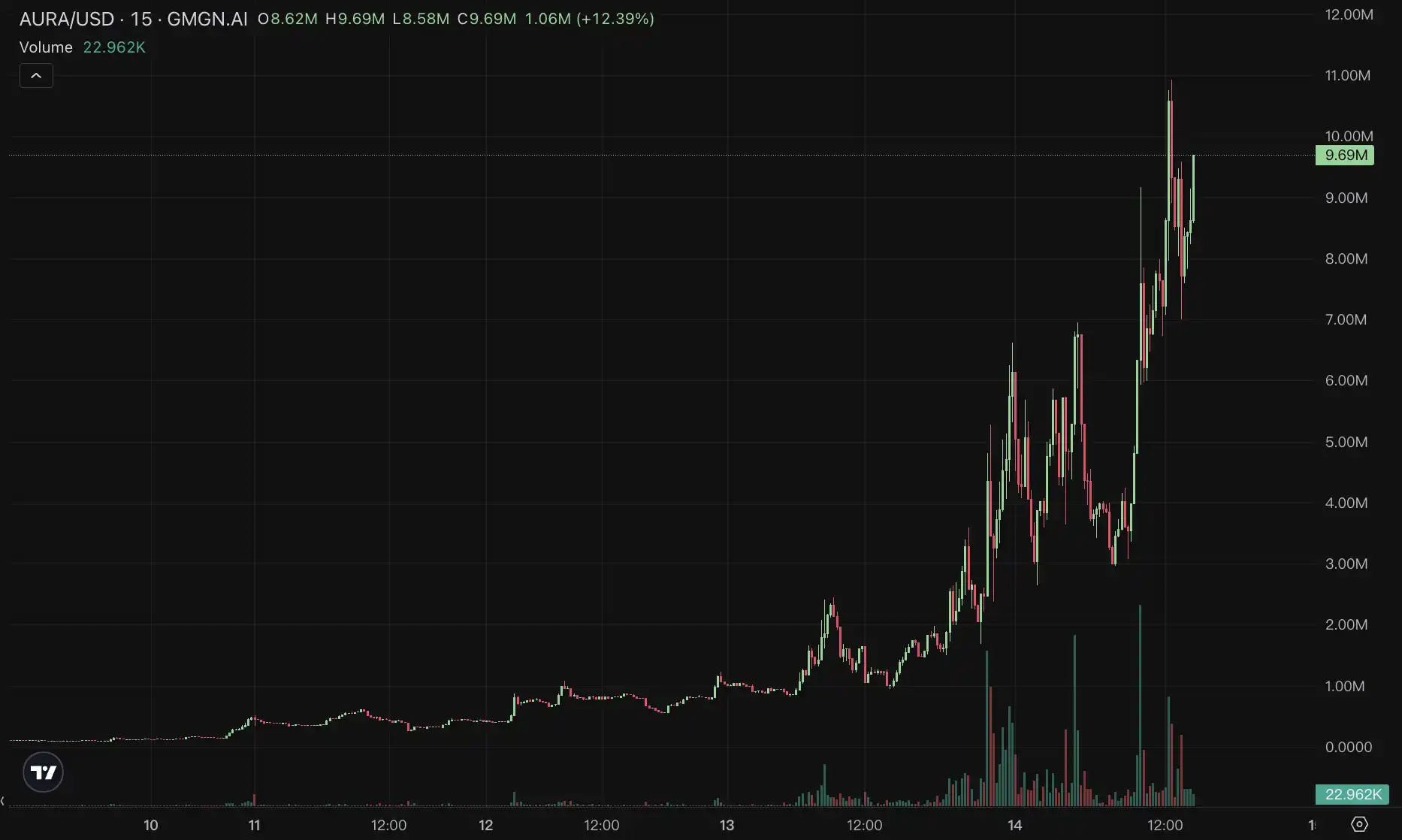
BUDDY
BUDDY is the platform token of CreatorBuddy, launched by @AlexFinnX. CreatorBuddy is an AI assistant that gives you posting permissions on your X platform. You can ask it any questions related to your past content. Its features include 8 AI tools: content coach, algorithm analysis, content creation, reply assistant, account research, historical review, brain dump, and inspiration generation.
BUDDY currently has a market cap of $12 million, with a 24-hour decrease of 4%.
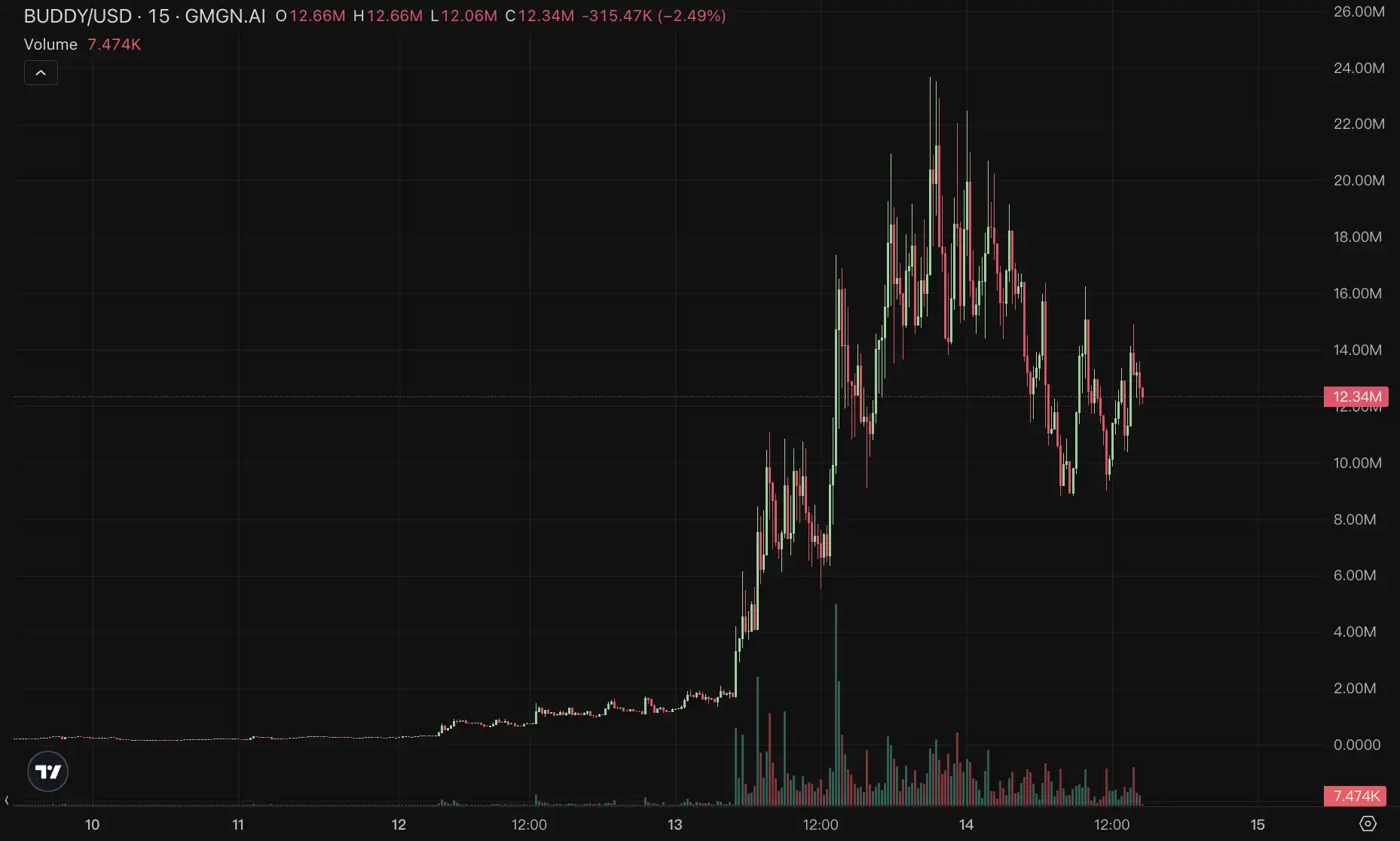
FITCOIN
@fittedcloset is an AI-driven virtual wardrobe application where users can upload their clothes, create outfits, resell unused items, and share with friends. It has over 300,000 downloads and 300 million+ social media views, with over 1 million pieces of clothing uploaded to the platform.
FITCOIN currently has a market cap close to $7 million, with a 24-hour increase of 96%.
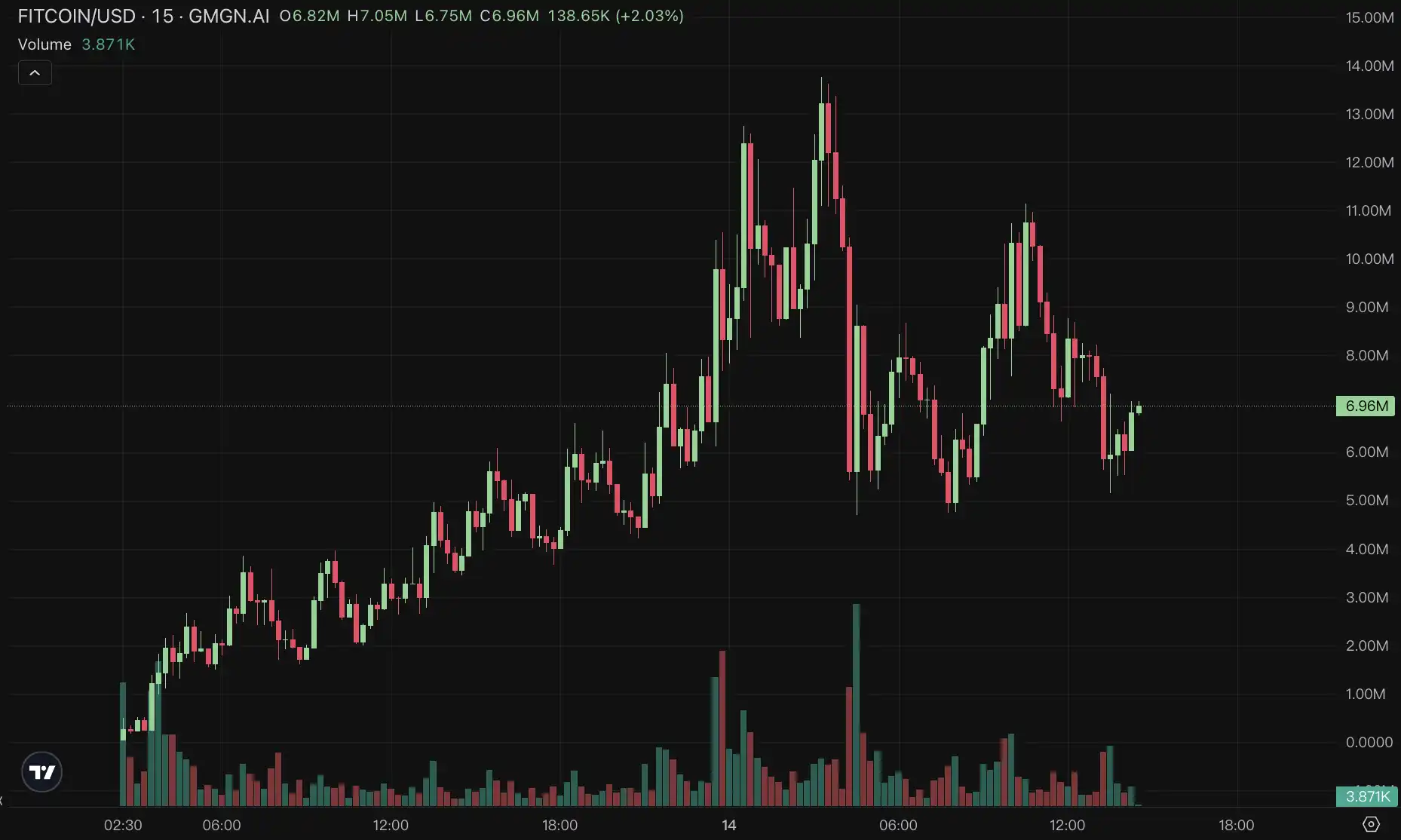
In addition, the Believe platform also features the short video app Giggles, where user interactions can earn crypto rewards; a tool called SuperFriend that helps developers "visualize and converse with codebases"; a prediction market platform PNP that requires no liquidity support; an app Kayyo focused on AI combat training that provides personalized training plans; a tool CreatorGen that can generate hyper-realistic AI influencers; and NinjaChat, which integrates multiple top AI tools. All of these have issued their own tokens on Believe, and readers can visit the Believe dashboard for more information.
The Real Proposition of ICM: Who Will Tokenize Good Assets?
Despite the hype around Believe driving the market cap of Launchcoin upward, many in the community still express skepticism, believing that "Internet Capital Markets" is just another ephemeral token generation bubble, similar to last year's AI Agent craze, which did not produce much actual value in AI applications but was merely a carnival of funds and traffic.
However, if we look further, we can see that these phenomena actually imply a structural shift—the crypto world is moving from "fictional narratives" to "real arbitrage." As Akshay BD explained in his latest tweet, from the perspective of capital markets, crypto has effectively addressed the issue of lowering the barriers to asset acquisition. No matter where you are, as long as you have a mobile app and some stablecoins, you can freely invest in any on-chain asset, no longer needing to navigate complex banking and brokerage systems or wait weeks to open an offshore account. This accessibility of "freedom" is unimaginable in the traditional financial system.
The problem is that crypto has not yet solved the "issuance mechanism for quality assets." The current token market is flooded with a large number of meme coins, shell projects, and speculative concepts that lack intrinsic value. This is not a fault of the technology but rather a natural result of regulatory gaps and distorted incentives. In traditional markets, securities issuance has clear thresholds, processes, and information disclosure mechanisms, while on-chain, anyone can issue tokens at will, with liquidity instantly following, and speculators rushing in. This "highly free" issuance mechanism makes it even harder for truly valuable assets to stand out.
Akshay believes that building a system that allows "quality assets" to be issued in the same convenient manner is what Solana should consider next. In other words, the ultimate goal of "Internet Capital Markets" should not be "anyone can issue a token," but rather "making those good assets that are difficult to issue and access become within reach."
The criteria behind this judgment are whether the asset can benefit from the current special economic/geopolitical environment and whether it is difficult to purchase through traditional brokers and banks. If both conditions are met, then it has a reason to be "tokenized."
For example, over the past decade, the reason the US dollar has become the dominant sovereign asset on-chain is not because it is technically easy to tokenize, but because global users have no choice when resisting the devaluation of their local fiat currencies. The rise of Bitcoin in the 2010s was also a form of "environmental arbitrage"—positioning itself as a decentralized hedge asset against currency overproduction. Today, if we can identify similar "structural demand assets" and achieve "free access" through on-chain issuance, that would represent the true meaning of ICM—not a hollow narrative, but the realization of institutional dividends.
From this perspective, Believe and LaunchCoin may just be a beginning, a prototype, an "experimental breakthrough" with obvious entertainment and bubble characteristics—it may not leave behind a value accumulation, but the mechanism it attempts to connect is indeed a necessary path for a portion of future assets. Ultimately, "Internet Capital Markets" will not be about everyone casually issuing a token, but rather about everyone being able to conveniently purchase quality assets.
免责声明:本文章仅代表作者个人观点,不代表本平台的立场和观点。本文章仅供信息分享,不构成对任何人的任何投资建议。用户与作者之间的任何争议,与本平台无关。如网页中刊载的文章或图片涉及侵权,请提供相关的权利证明和身份证明发送邮件到support@aicoin.com,本平台相关工作人员将会进行核查。




